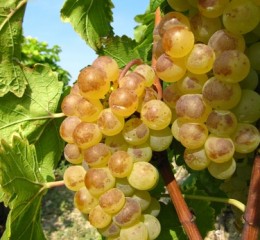


The Champagne vineyards are made up of a large number of plots. The appelation controlée stretches over 319 communes. Among them, only 17 are classed Grand Cru for the excellence of their terroir, 44 are classed Premier Cru, while the others are called Champagne.
After the grape harvest, everything is kept for two weeks in wooden barrels or stainless steel for a first fermentation. Yeast is added. This accelerates the transformation of the sugar into alcohol. Following that first stage (a fortnight after the harvest) the level of alcohol must not exceed 11°.
This is followed by the assemblage. That's a stage where savoir-faire and experience work their spell. Wines from different grapes, terroirs and even years are 'mixed'. The tradition of the Champagne area requires every vintage to be unique.
The wine that has been created during the assemblage is then bottled (after the 1st January following the harvest) for the prise de mousse (literally 'foam creation'). They then add to the wine a mixture of wine, sugar and yeast (liqueur de tirage). For a further 6 to 8 weeks the wine develops carbon dioxide and stronger alcohol which gives the finished wine its subtlety.
The watertight cork is exchanged for a different cork which allows very little air to penetrate and very little carbon dioxide to escape. The bottles are then stocked on their sides in a cellar for at least 15 months. The yeast dies off and is transformed into a deposit which must be eliminated.The bottles are regularly turned, neck downwards so the deposit drops towards the cork. When the cork is changed, the deposit is expelled by the gas. The bottle receives some drops of liqueur de dosage (cane sugar) … and finally its cork, cap and last of all the wire cage are added. All this 20 months after the grape was harvested.